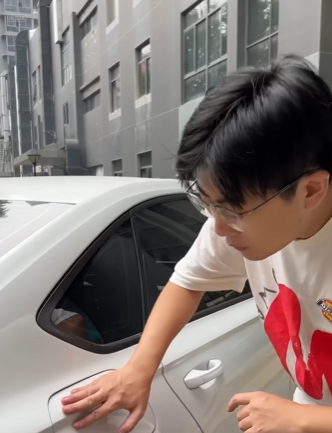
When you think about car maintenance and performance, you probably picture things like oil changes, tire rotations, or engine diagnostics. But there’s one small, often overlooked component that plays a surprisingly important role in your vehicle’s efficiency and safety: the fuel tank cap. While it might seem like a simple screw-on lid, the fuel cap holds a hidden secret — it does far more than just prevent fuel from spilling out. In fact, it plays a crucial role in fuel economy, environmental protection, and even diagnostic systems.
Let’s dive into the hidden world of your car’s fuel tank cap and uncover the secrets that can save you money, help the environment, and keep your car running smoothly.
1. It’s More Than Just a Lid
At first glance, a fuel cap looks like a basic cover for your gas tank. You twist it off when you refuel and screw it back on when you’re done. Simple, right? Not quite.
Modern fuel caps are engineered components that form a pressurized seal. This seal prevents gasoline vapors — which are highly flammable and environmentally harmful — from escaping into the air. These vapors contain hydrocarbons, a major contributor to air pollution and smog. The cap also prevents contaminants like dirt, water, and debris from getting into the fuel tank, which could lead to costly repairs.

2. Fuel Efficiency and Pressure Control
A tightly sealed fuel cap helps maintain the proper pressure inside your fuel tank. This pressure balance is essential for the fuel delivery system, especially in vehicles that rely on fuel injection. If the cap is loose, damaged, or missing, your car might lose pressure in the system, forcing the fuel pump to work harder and reducing your gas mileage.
According to automotive experts, a faulty or missing fuel cap can lower fuel efficiency by as much as 2-4%. Over the course of a year, that’s like paying for an extra tank or two of gas — all because of a small part most people ignore.
3. The Fuel Cap and the Check Engine Light
Here’s a secret that surprises many car owners: a loose or faulty fuel cap is one of the most common reasons for the “Check Engine” light to come on.
Modern cars have an onboard diagnostic system known as OBD-II. This system constantly monitors various parts of your vehicle, including the evaporative emission control system (EVAP), which traps fuel vapors and keeps them from escaping into the air. If the EVAP system detects a leak — even a small one caused by a loose gas cap — it will trigger a fault code, turning on the warning light.
In fact, mechanics often advise checking the fuel cap first if your check engine light appears. Simply tightening the cap or replacing it with a properly sealed one can solve the problem.

4. Environmental Impact
One of the lesser-known secrets of the fuel cap is its impact on the environment. Fuel vapor emissions contribute to ground-level ozone, which can cause respiratory problems and harm wildlife. These vapors also contain volatile organic compounds (VOCs), which are harmful to both the environment and human health.
A properly sealed fuel cap ensures that your vehicle is not leaking harmful vapors into the atmosphere. In the U.S., it’s estimated that 147 million gallons of gasoline are lost each year due to evaporation — and a significant portion of that is caused by faulty or missing gas caps.
5. Anti-Theft and Safety Features
Some modern fuel caps come with locking mechanisms to deter fuel theft. This might not be a big concern for everyone, but in certain areas or during times of high fuel prices, a locking fuel cap can protect your gas — and your wallet.
Additionally, newer vehicles sometimes feature tethered caps that are attached to the car to prevent you from forgetting or losing them. Others have capless systems that seal automatically, reducing the risk of human error.
6. Cold Weather and Fuel Cap Behavior
Another hidden aspect of your fuel tank cap involves how it behaves in cold temperatures. In freezing climates, moisture can accumulate around the cap and freeze it shut. If this happens, you should never force the cap open, as you could damage it or the filler neck. Instead, warming the area gently or using de-icer spray can help.
Also, in winter, a bad seal on your cap can allow moisture into the fuel system, leading to poor engine performance or even internal rusting in your tank.

7. How to Know If Your Fuel Cap Needs Replacing
Fuel caps aren’t designed to last forever. Over time, the rubber gasket that forms the seal can wear out, crack, or dry up, leading to leaks. Signs you may need a new fuel cap include:
- The check engine light turns on shortly after refueling
- A hissing sound when removing the cap (a small hiss is normal, but a loud or prolonged one may indicate pressure issues)
- The cap doesn’t click when you tighten it
- Visible damage or cracking on the cap or rubber seal
- Strong smell of gasoline near the back of the car
Replacement fuel caps are affordable and widely available. Some are even made specifically for your car’s make and model, ensuring the best possible seal and compatibility.
8. What About Capless Fuel Systems?
Some newer vehicles have done away with traditional gas caps altogether. These capless fuel systems use a spring-loaded door that seals automatically when the fuel nozzle is removed. While convenient, they still require care — if the sealing mechanism gets dirty or damaged, it can cause the same problems as a bad cap.
Capless systems are less prone to human error (like forgetting to tighten the cap), but they’re not immune to leaks or wear. Regular inspections and occasional cleaning can keep them working properly.

Final Thoughts
So, what’s the hidden secret of your car’s fuel tank cap? It’s this: something so small and inexpensive has a major impact on your vehicle’s fuel efficiency, environmental footprint, and even its ability to function properly. Many drivers never give their gas cap a second thought, but as you’ve seen, it’s far from just a lid.
Taking a moment to check your cap regularly — and replacing it when needed — can save you money, protect the environment, and keep those pesky warning lights off your dashboard.
The next time you fill up at the pump, take a second to appreciate the little piece of plastic and rubber that plays a big role in keeping your car running right.



